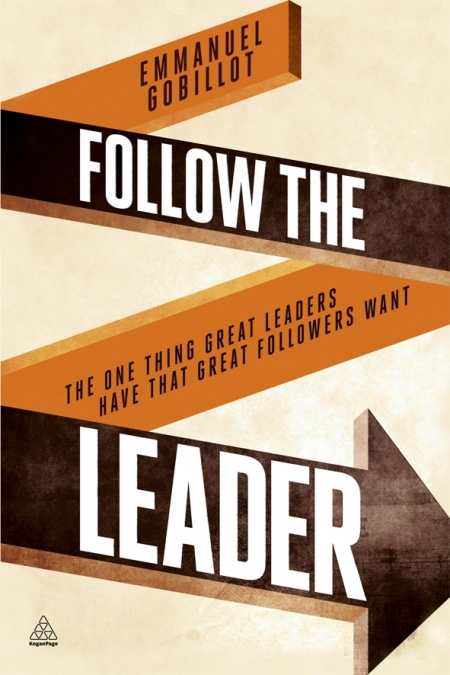Follow the Leader
The One Thing Great Leaders Have That Great Followers Want
Leaders require a certain element of charisma, and Gobillot sets forth to nail down that mysterious quality that anybody can emulate.
According to Emmanuel Gobillot, the magic ingredient effective leaders should strive to evoke is “followership,” a mystery that the author unlocks through a clear, concise narrative. In Follow the Leader, he shows how leaders can meet the needs of followers in ways that rally and encourage the team to act together—a winning formula for accomplishing strategic goals and building more collaborative and resilient organizations.
What makes this new title worth adding to a list of essential business reading? Gobillot charms and warms the reader with revealing personal anecdotes from his consulting career, as well as witty sketches of personalities from history. He uses surprising findings from psychological studies and the latest brain science to illustrate how decision making spans our conscious and unconscious minds.
Followers can be either attracted or intimidated, and Gobillot strongly favors attracting people to one’s side instead of using coercion and fear. Business books, he explains, often fail to capture the central essence of work relationships by overemphasizing logic and organizational charts. The truth is that people use the rational and emotional part of their brain to make decisions to align themselves with a leader.
Leaders require a certain element of charisma, and Gobillot sets forth to nail down that mysterious quality in replicable terms that anybody can emulate. The leader needs a wide-ranging set of character traits in areas such as compassion, hope, and rhetoric, just to mention a few. Leaders must understand the “emotional logic” of others, practicing a realistic kind of compassion. Leaders should master the art and craft of language to convey a message—and issue effective calls to action. As the author sums it up, “Leaders inspire where managers engineer … because management requires compliance where leadership requires self-direction on the part of the followers.”
Gobillot carefully details his central thesis, supporting his key points with psychology and neuroscience research. He gives clear illustrations drawn from the real world, from President Obama and the Tea Party, to the creation of the Oxford English Dictionary, to the rise of unlikely luminaries such as Marie Tussaud. He asks why visitors to the Louvre rush past great masterpieces to crowd in for a glimpse of the Mona Lisa—a work that is enigmatic and masterful, yet no greater than many of the others in the same collection.
The book’s carefully thought-out structure works to demystify elusive concepts. Helpful graphics highlight major points. The chapters are engagingly framed with a central question and a “tweet” conclusion. Gobillot pulls the reader along much like the leader he describes, by entertaining, sparking interest, and by enticing.
Reviewed by
Seamus Mullarkey
Disclosure: This article is not an endorsement, but a review. The publisher of this book provided free copies of the book and paid a small fee to have their book reviewed by a professional reviewer. Foreword Reviews and Clarion Reviews make no guarantee that the publisher will receive a positive review. Foreword Magazine, Inc. is disclosing this in accordance with the Federal Trade Commission’s 16 CFR, Part 255.

